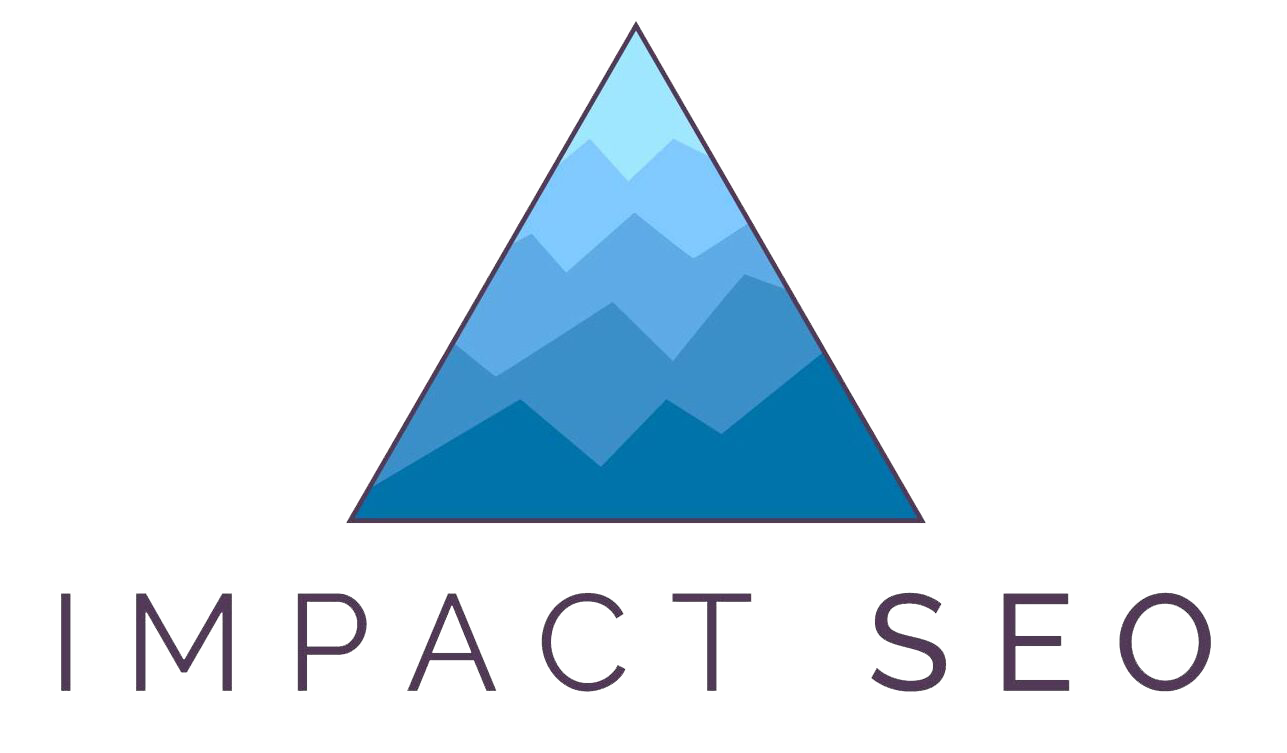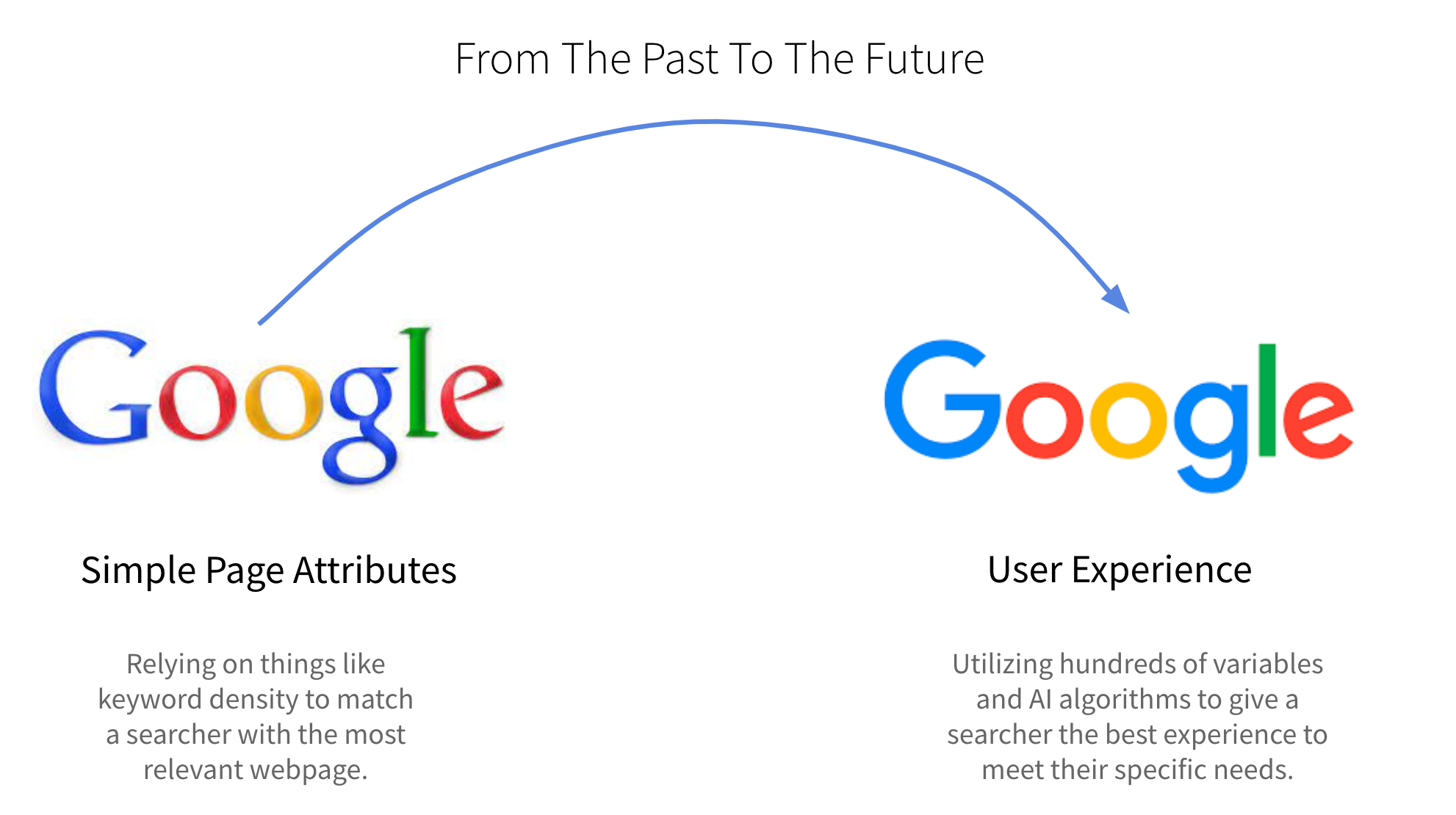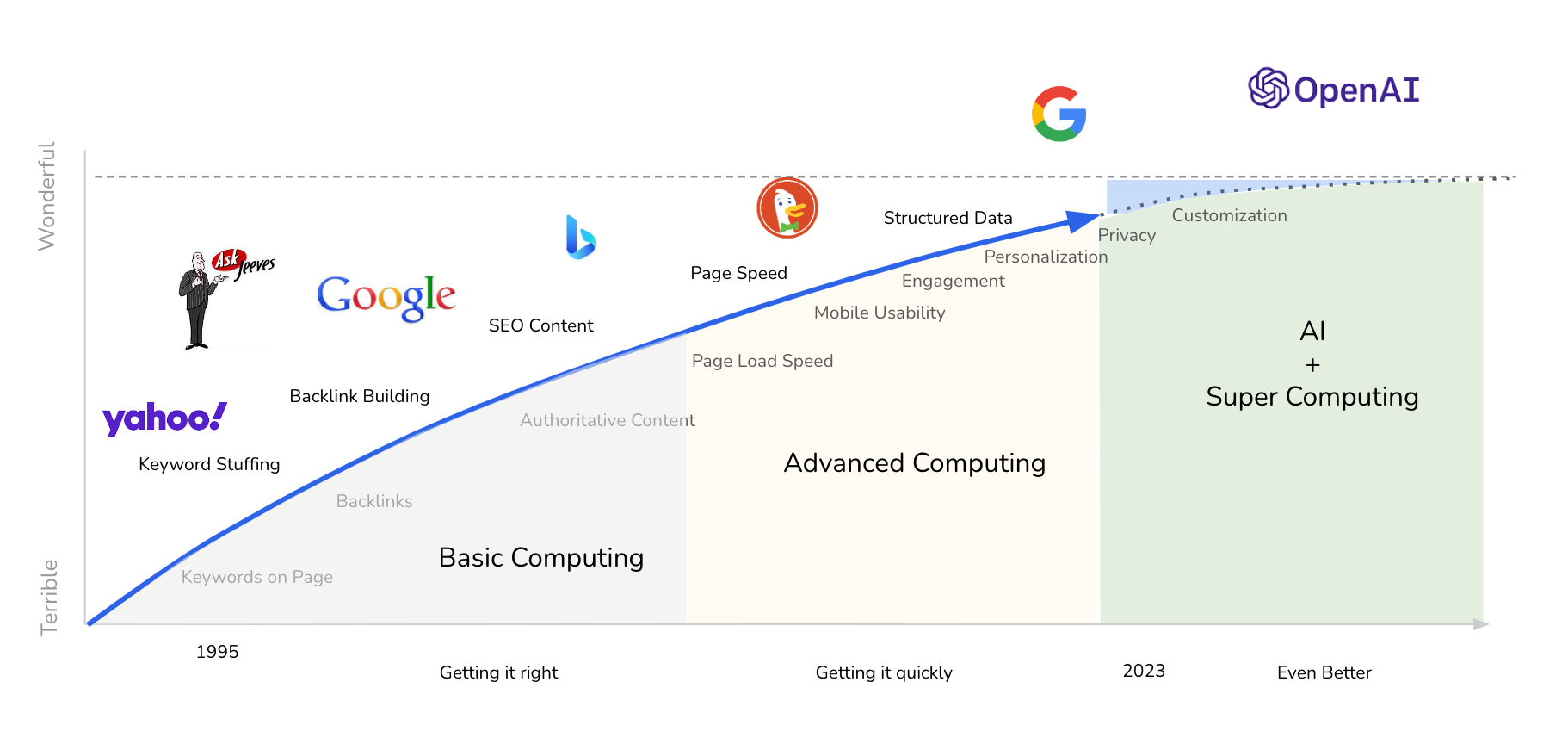Why Are You Here?
If you have any doubt that your SEO strategy is off track, ineffective, or unsustainable and you want to fix it… you’re in the right place.
There’s too many SEO myths, too much outdated advice, and not enough properly trained SEO experts to combat it all. But I have good news for you: the world of SEO has evolved out of the wild west and into a modern civilization. The streets are clean, the laws are fair, and the future is more certain. The days of an immature search algorithm that can be gamed are over. It’s a sad day for the black-hat wizards, but a good time to thrive for the rest of us.
This post outlines the guiding principles for sustainable SEO – an approach to optimization built for the modern world of search engines. These principles and the series that follows will bring you into the modern world of SEO and teach you how to navigate it. My goal in creating this guide is to give you peace of mind in knowing you’re using SEO the right way to grow your business, nonprofit, or pet project sustainably.
What Are Guiding Principles?
The 5 Guiding Principles outlined here are a set of fundamental truths about how we optimize for search engines. When you understand these principles, you can get to the answer of any SEO question by applying the concepts explained within them.
In the Sustainable SEO series that follows this introduction, we’ll apply these principles to specific examples to see how they work.
The 5 Guiding Principles for Sustainable SEO
Principle 1: Keep The End In Mind (Long Term Growth)
Too often we lose sight of what’s important and end up wasting hours of our time doing things that have no impact on our end goal. Let’s prevent that from happening with our SEO.
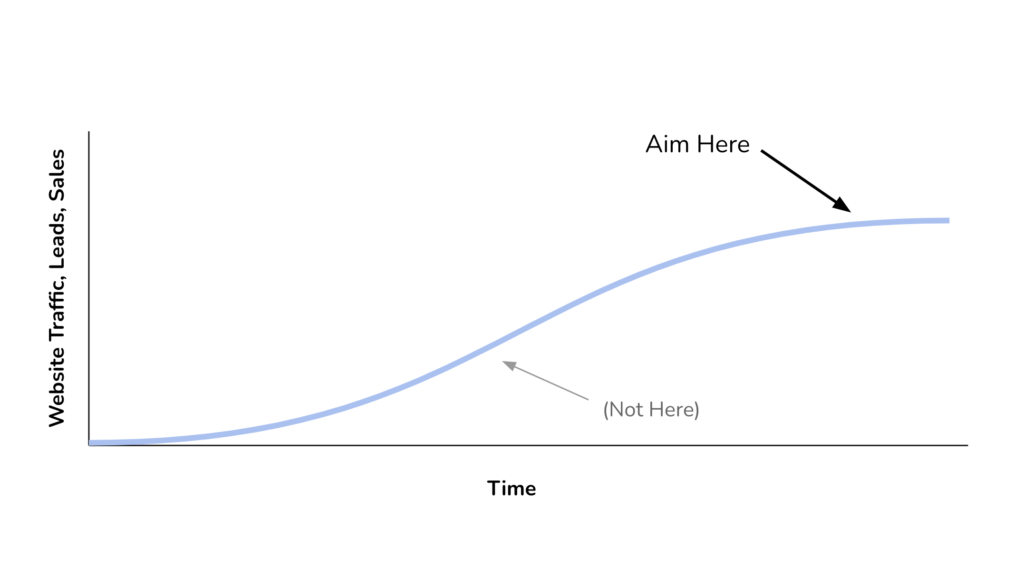
Keep your eyes on the end goal
The Big Picture
Our goal with SEO is to leverage search engines to reach the right people at the right time. We do this work to support the growth of our organization. SEO is a good investment when it supports our end goal… but when we veer off course, we waste time and money we can’t get back.
Throughout any and all SEO activities remember WHY you’re doing SEO and HOW it fits into the big picture of your organization’s growth. If you lose sight of this your SEO efforts will go haywire.
Common Mistakes
Here are common mistakes SEOs make when we don’t align our actions with our ultimate growth goals:
- Boosting vanity metrics – if we focus on the wrong metrics, we can end up getting thousands of visitors to our site but not getting any leads or sales.
- Checking off the boxes – trying to fix all the “errors” that appear in automated site audits from tools like Moz, Ahrefs, SEMrush, and Yoast will deplete your budget before you see any results. Knowing which “issues” to fix and which ones to ignore is a critical skill to develop.
- Gaming the algorithm – trying to “game” search algorithms is a futile effort. There’s a tiny chance we can get a temporary boom, but in most cases the result is a longer bust that is difficult to recover from.
There are plenty more mistakes… we’ll explore them and explain how to avoid them in the series that follows.
You’ll know you’re following Principle 1 properly if… you can easily map any SEO activity back to your end goal and explain it in terms your CEO or board of advisors can understand.
Principle 2: Think Win-Win: Match Your Goals with Google’s
My heart is broken on a daily basis as I field questions from entrepreneurs and SEO trainees who are living in the past. It’s clear they don’t understand the fundamentals of how Google’s algorithm works and they are employing outdated SEO tactics. Until their thinking is updated, at best their efforts will be a waste of their time and at worst they are doing more harm than good.
For a ticket to present-day SEO – and into the future – I advise them to follow Principle 2, which has two parts:
- Understand the basics about how Google’s algorithm works (explained here)
- Realize that both you and Google can win when you play the game right
What Google Wants (And How You Can Help)
Google’s goal is to provide the best search experience for their users. They want someone using the Google search bar to find the best possible resource to answer their search query. If they do this right, more people will rely on their service and they’ll make more money.
How do you help Google get what it wants?
The simple answer: create high quality content that matches what your target audience is searching for AND follows Google’s best practices guidelines (which is mostly just common sense).
There are many ways this manifests itself in SEO that range from helping the “Google Bot” understand your content all the way through developing signals of trust. Throughout this series we’ll dig into the other ways we can help Google… and how doing so we also help ourselves. For now, remember that playing nice with Google is the most sustainable way to grow through SEO.

Play in the area where your goals overlap with Google’s (Slide 3)
Common Mistakes
You will know you’re violating Principle 2 if…
- You don’t understand – at least roughly – how Google determines what content is high quality
- You aren’t familiar with Google’s guidelines (or you’re not following them)
- You believe you can hack the world’s best algorithm that is backed by millions of dollars, the world’s best engineers, and leading artificial intelligence
- You’ve been putting in effort for SEO but you aren’t getting any results
If you catch yourself making these mistakes, it’s time for a reset.
You’ll know you’ve embraced Principle 2 when… you’re thinking more in terms of how you can help your target audience get what they’re looking for and less in terms of keyword density, greenlights on Yoast, and the latest SEO growth hacks.
Principle 3: Employ The Minimum Effective Dose
I see way too many clients spending hours on SEO activities that have little to no impact on their bottom line. They don’t know they’ve crossed into the “bad investment” realm of diminishing returns, so they keep plugging away, expecting results and getting nothing.
Don’t keep banging your head against the SEO wall when you could use that time to do something else to grow your business… or god-forbid, make more time for non-work activities.
Use Your Time Effectively
The minimum effective dose (MED) means we put in the least amount of resources to get our desired outcome. The concept is best known in healthcare where a doctor should only prescribe the minimum amount of medication that is needed to have the desired effect. Prescribing more than that is not only unnecessary, but can cause unwanted complications. When it comes to SEO, once you’ve completed the amount of optimization that is going to get you the desired result… anything after that is a waste of time, and can potentially have negative effects.
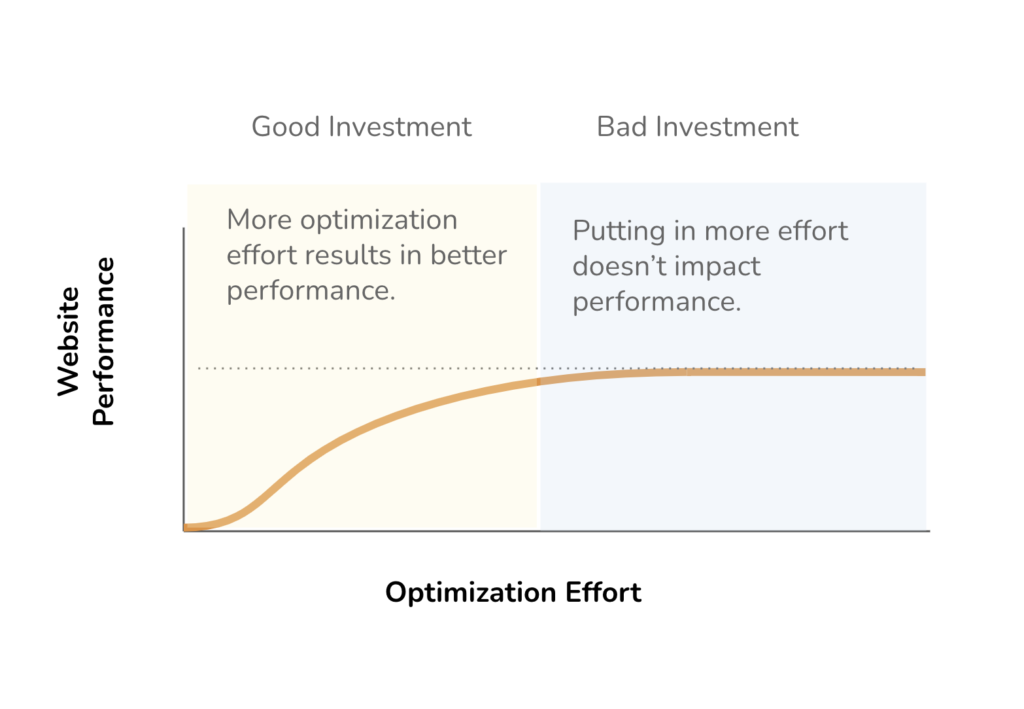
Know when you’ve entered the land of diminishing returns (Slide 2)
Common Mistakes
Watch out for these red flags signaling you’re in the land of diminishing returns:
- Perfecting Title Tags… for pages that have no organic search value.
- Fixing Technical Issues… that have no impact on SEO.
- Making Yoast Score Green… when you’ve written quality content for your audience.
To further exacerbate this problem there’s a delay between optimization and performance. You can update a page and your rankings may not change for weeks. It’s even longer and fuzzier with things like link building. This makes it hard to connect cause and effect between your SEO work and results, which is why it’s difficult to tell when you’re in the land of diminishing returns.
But there are good ways to know when optimization is helpful and when you’re over-optimizing. We’ll cover these as we apply our principles to specific SEO activities in this series.
For now, remember this: life is short. We don’t want to spend our precious time optimizing title tags for no reason. Let’s do the important things that will help us achieve our goals. Then let’s go to the beach.
Principle 4: Follow The Data
When it comes to SEO, there are some obvious and non-obvious tenets. Here are a few examples:
Non-obvious: don’t follow your heart or your gut – neither have evolved to deal with things like algorithms, the internet, or backlinks.
Obvious: don’t trust advice that comes from someone who is claiming to have gotten rich from “this one simple trick” and is sporting a lamborghini in their YouTube ad. Chances are they’re making money off selling people a dream, not helping them actually get results.
The safest path for sustainable growth is founded in the scientific process:
- Set your hypothesis
- Build an experiment to test it
- Collect accurate data
- Evaluate it
- Repeat
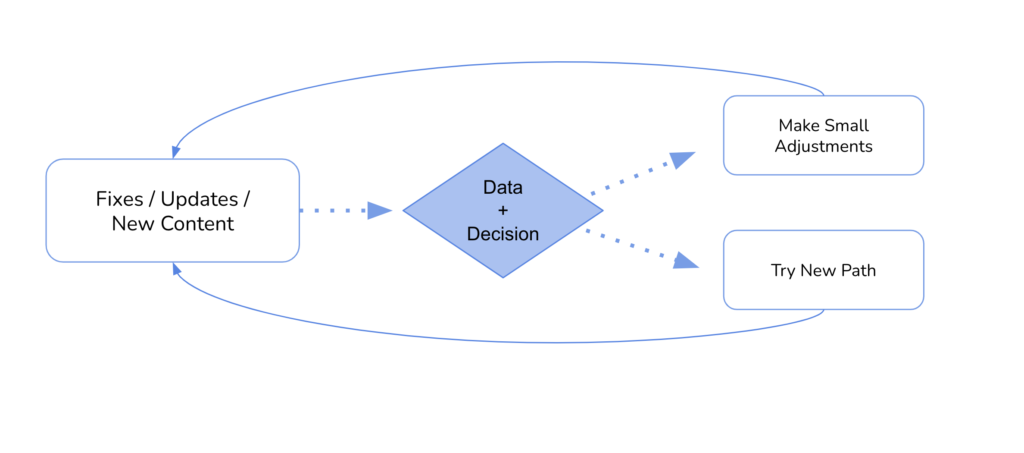
Put data at the center of your decision making
Every Situation is Different
Resist the urge to jump on the latest hack that promises to explode your website traffic. The audience you seek to connect with is unique. The way you present information for them is unique. You need to study what works for you. With the exception of investigating a few close competitors, the best information you’re going to get will come from data that reflects how your target audience is interacting with your website.
Weight the insights you get from your website higher than every other resource at your disposal.
The fundamentals:
- Get reliable data
- Make decisions based on data
- Iterate and get stronger over time
Common Mistakes
Things we all learn… hopefully sooner than later:
- Not setting up proper website tracking like Google Analytics
- Starting SEO work before learning the basic KPIs
- Jumping from one SEO hack to another and never gaining any real traction
- Going “all in” on a strategy that worked for another business but isn’t applicable to yours
The biggest challenge with this principle is knowing what data to look at, how to gauge its accuracy, and where to get it. In most cases the combination of Google Analytics and a keyword rank tracking tool will give you 90% or more of the information you need for SEO. Add in Google Webmaster Tools and some backlink information to get to 100%.
Remember This: Our most valuable data comes from our target audience. Find a way to get it… and use it.
Principal 5: Keep it Simple
If you can’t explain your SEO strategy to a non-technical person in 5 minutes or less, your strategy is too complicated. Dig into the details when necessary, but keep your core strategy simple.
Especially if you’re new to SEO, covering the basics will get you most of the results you want. The 80/20 rule (aka Paredo’s law) is applicable to most SEO. 20% of the effort results in about 80% of the growth. We’ll dig into specific cases where this is applicable throughout this series.
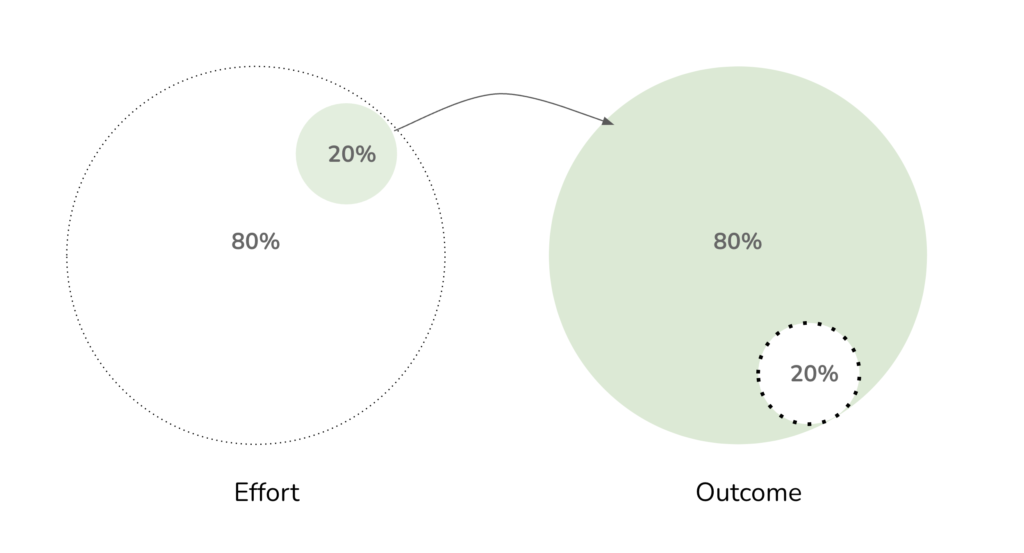
Focus on the key 20% of SEO activities and you’ll get 80% of your desired results.
Regardless of your niche, your simplified SEO strategy will be some form of: “Create high-quality content tailored to the needs of our target audience and make it easy for search engines to interpret it.”
There will be a lot going on under the hood here… like:
- The details of how your target audience uses Google to find answers (keyword research)
- How your webpages are presented in the search results page (metadata optimization)
- How you help your website visitors navigate your site once they are there (UX)
- And much more…
Spend time on details that matter:
- Really understanding your target audience
- Creating content that your audience needs
- Collecting the right data to make improvements
Common Mistakes
If you’re seeing any of these signs, it’s time to take a step back and re-evaluate…
- Overthinking – Getting so caught up in the details of having a full-fledged strategy that you delay starting the real work. Timing is a key component to SEO. The sooner you start, the faster you’ll get results.
- Over-optimizing – Writers, developers, designers, and other key team members are overlooking the basics of creating a good experience for their target audience because they are too focused on “optimizations” like keyword density and h1 tags.
- Bottlenecking – Limiting publishing by requiring the content to be “SEO optimized” before it goes live. This can create a bottleneck in an organization and usually does more harm than good.
You’ll know you’re keeping it simple when… everyone in your organization can describe the basic SEO strategy you’re employing and how their role supports it.
Breaking The Rules
Applying these principles will simplify your SEO efforts and make them more sustainable. Of course, there are occasions where we will bend or break the rules. Just like any good law-abiding citizen, there’s a time and place to deviate from the law of the land… but it’s usually not much or for very long.
As we apply these principles to specific SEO activities, I’ll be careful to point out when, why, and how these rules should be broken. For now, I recommend thinking about following them as closely as possible, not about the rare occasion where we’ll deviate.
Let’s Get To Work
In the series that follows we’re going to apply these principles to specific SEO activities. We’ll start with the most common, like creating new content and optimizing pages, then we will work our way into the land of the esoteric.
Our goal is to implement sustainable SEO, where we simplify our SEO efforts AND drastically improve our results.
